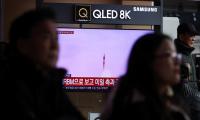KARACHI: Credit rating agency Fitch Ratings expects Pakistan’s growth to stabilise at 4 percent in the next fiscal year, supported by a continued strengthening of domestic consumption and resilient manufacturing and construction activity.
While affirming Pakistan’s long-term foreign-currency issuer default rating at 'B-' with a stable outlook, Fitch said the economy appears so far to have weathered the pandemic shock well relative to peers. The growth is estimated at 3.9 percent this fiscal year compared to a contraction of 0.5 percent a year earlier.
“However, economic uncertainties from the pandemic and political challenges to keeping the reform agenda on track pose risks,” Fitch said in a statement late on Thursday night.
Fitch forecasts a policy rate hike of only 25 basis points from the current 7 percent in FY22. “Risks remain that inflationary pressures could prove more persistent, particularly given a negative real policy rate, which could prompt a higher degree of tightening by the SBP [State Bank of Pakistan].”
The rating agency said Pakistan's 'B-' rating reflects weak public finances, external finance vulnerabilities, and low governance indicator scores.
“A decline in external vulnerabilities has been facilitated by adherence to a market-determined exchange-rate regime, which has served as a shock absorber during the pandemic,” it said. “Progress towards institutionalising this framework, if sustained, should limit medium-term risks by keeping current account deficits contained and reducing foreign-exchange reserve pressures.”
Fitch projects current account deficit to narrow to 0.5 percent of GDP in FY21, from 1.7 percent in FY20, due to a surge in remittance inflows, import compression, and low average oil prices.
“Remittance growth averaged nearly 30 percent in FY21, reflecting a shift from informal to formal remittance channels and an underlying increase in transfers from non-resident Pakistanis,” it said. “Export growth, which is key to medium-term external sustainability, has also picked up, but from low levels.”
However, the current account deficit is expected to widen to 1.9 percent of GDP in FY22 as the recovery in domestic demand and higher oil prices push imports higher. External debt repayments are projected to remain high, at about $8 billion to $10 billion per annum over the next few years. Participation in the G-20's debt service suspension initiative has reduced near-term pressures by postponing $3.7 billion in payments previously scheduled between May 2020 and December 2021 to over a five- to six-year period, said Fitch.
Fitch said access to external financing from multilateral, bilateral and private sources has been sustained, facilitated by the government's policy reforms and continued progress in meeting conditions under the extended fund facility program with the International Monetary Fund.
“Pakistan's March 2021 Eurobond issue of $2.5 billion had strong investor demand. China remains a key source of bilateral financing, providing about $2.3 billion in budget support in FY21, and augmenting the size of the People's Bank of China's currency-swap agreement with the State Bank of Pakistan by $1.5 billion, which was used to help repay $2 billion in deposits from Saudi Arabia in FY21,” it said.
Fitch projects debt-to-GDP ratio to decline to 83.7 percent in FY21, from 87.2 percent in FY20, as a result of rupee appreciation against the US dollar and high nominal GDP growth. “This remains high relative to the 68.3 percent ratio of the 'B' median in 2021. Under our baseline, fiscal consolidation and solid nominal GDP growth will lead to a gradual downward trajectory in the debt ratio to about 79 percent of GDP by FY22. The government has continued to improve its debt management practices with extended maturities on domestic debt reducing rollover risks.”
A representational image of gold jewellery. — AFP/FileKARACHI: Gold prices rose by Rs1,000 per tola on Wednesday in...
People walk past a logo of the battery manufacturer Contemporary Amperex Technology Co Limited at the Auto Shanghai...
This representational image shows mobile phone connection towers. — AFP/FileKARACHI: The Pakistan Telecommunication...
A foreign currency dealer counts US dollars and Pakistani currency at a shop in Karachi on March 2, 2023. —...
Travellers wait for their trains at Shanghai Hongqiao railway station, during the Spring Festival travel rush ahead of...
The USA and Federal Reserve flags fly on top of the Federal Reserve Board building in Washington DC, USA on July 1,...







